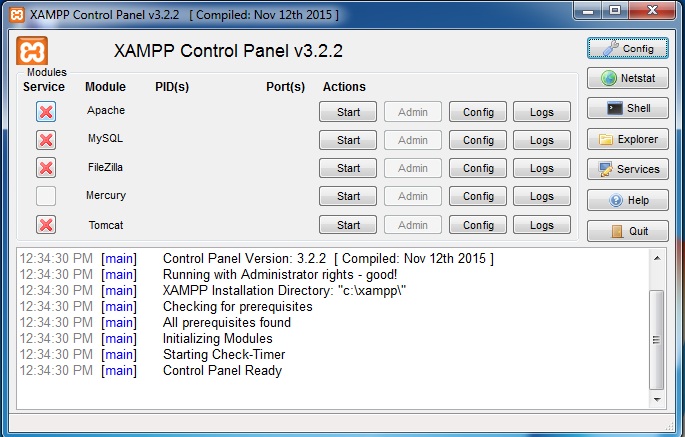

Loaded: loaded (/lib/systemd/system/ enabled vendor preset: enabled)Īctive: active (running) since Sun 12:53:22 UTC 45s ago Repeating this process, now start the php7.2-fpm service:Īnd verify the status of the php7.2-fpm service: Status: "Processes active: 0, idle: 2, Requests: 0, slow: 0, Traffic: 0req/sec" Process: 20979 ExecStartPost=/usr/lib/php/php-fpm-socket-helper install /run/php/php-fpm.sock /etc/php/7.0/fpm/pool.d/www.conf 70 (code=exite Process: 20961 ExecStopPost=/usr/lib/php/php-fpm-socket-helper remove /run/php/php-fpm.sock /etc/php/7.0/fpm/pool.d/www.conf 70 (code=exited, Loaded: loaded (/lib/systemd/system/ enabled vendor preset: enabled)Īctive: active (running) since Sun 12:53:23 UTC 15s ago Next, verify the status of the php7.0-fpm service:

Now repeat the process for PHP version 7.2. libapache2-mod-fcgid contains a mod_fcgid that starts a number of CGI program instances to handle concurrent requests.

Xampp install php sockets how to#
You can learn how to point domains to DigitalOcean Droplets by following How To Point to DigitalOcean Nameservers From Common Domain Registrars. A domain name configured to point to your Ubuntu 18.04 server.An Apache web server set up and configured by following How to Install the Apache Web Server on Ubuntu 18.04.One Ubuntu 18.04 server with at least 1GB of RAM set up by following the Initial Server Setup with Ubuntu 18.04, including a sudo non-root user and a firewall.The second, site2.your_domain, will deploy PHP 7.2. The first, site1.your_domain, will deploy PHP 7.0. Each site will use its own domain, and each domain will deploy its own version of PHP.

In this tutorial you will set up two PHP sites on a single instance. In fact, using Apache with PHP-FPM is one of the best stacks for hosting PHP applications, especially when it comes to performance. PHP-FPM also offers configuration options for stderr and stdout logging, emergency restarts, and adaptive process spawning, which is useful for heavy-loaded sites. Combining Apache with PHP-FPM is also a more cost-efficient solution than hosting each application on its own instance. This is useful because different applications may require different versions of PHP, but some server stacks, like a regularly configured LAMP stack, can only manage one. Together, you can use Apache and PHP-FPM to host multiple PHP web-applications, each using a different version of PHP, all on the same server, and all at the same time. Similarly, PHP-FPM uses a daemon to manage multiple PHP versions on a single instance. The Apache web server uses virtual hosts to manage multiple domains on a single instance. The author selected the COVID-19 Relief Fund to receive a donation as part of the Write for DOnations program.


 0 kommentar(er)
0 kommentar(er)
